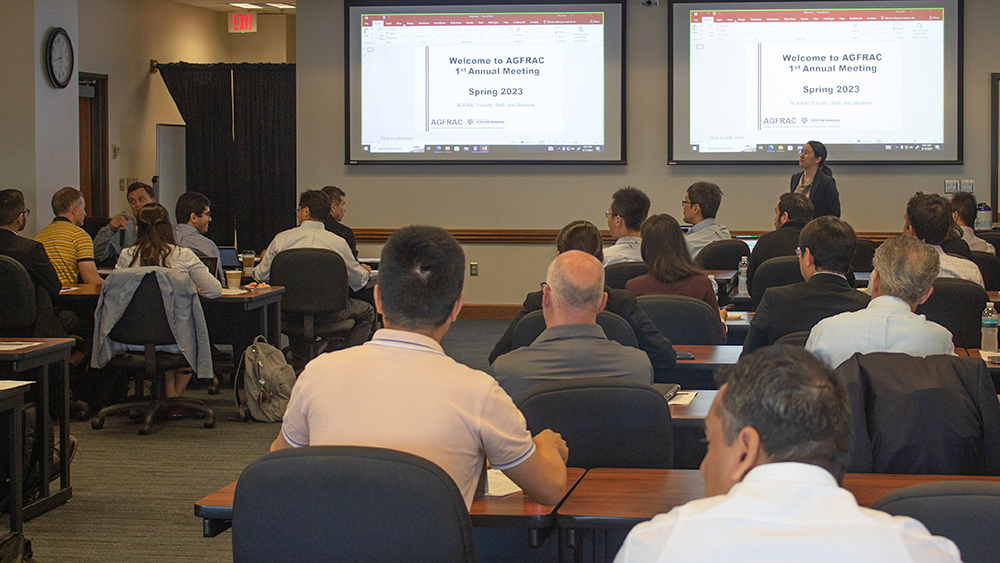
Advanced downhole sensors and other monitoring equipment gather vast data from the Earth's subsurface. This data is often packed with unneeded information, making it challenging to find the right clues for working successfully in the unseen underground.
On May 17, Dr. Kan Wu held the initial meeting of the Advanced Geomechanics Fracture & Reservoir Application Consortium (AGFRAC) at Texas A&M University. The consortium's research involves advanced data interpretation and portrayal. It can also model situations and possible results for its sponsors' subsurface operations.
This meeting fostered an insightful discussion on cutting-edge technologies and industry trends.
Wu, the Class of '75 DVG Associate Professor in the Harold Vance Department of Petroleum Engineering at Texas A&M, said AGFRAC aims to pioneer innovative and efficient subsurface activities and methods in the petroleum reservoir development, carbon storage and geothermal development fields.
The first meeting brought together experts and professionals to discuss the latest developments and insights.
Currently, AGFRAC researchers focus on the subsurface monitoring of distributed fiber optic sensing and hydraulic fracturing. The researchers can offer tools, simulators and workflows for practical data analysis and interpretation. They also develop functional and theoretically-sound models and effective production theories for various field applications on either member or open-source datasets. These models describe and predict fracture geometry, reservoir drainage volume and fluid plumes in subsurface formations. The service improves members' operating performance in the subsurface by optimizing fluid injections and energy returns.
Wu founded the consortium with Dr. Ge Jin, an assistant professor at the Colorado School of Mines, a year ago. Fellow Texas A&M petroleum engineering professor Dr. Tom Blasingame is AGFRAC's advisor. Before starting AGFRAC, Wu and Jin collaborated on a successful method for monitoring subsurface shale fractures using fiber optic data.
Wu's biggest challenge was engaging members to join the consortium. She overcame it by talking with each operator about the benefits and potential returns the consortium provides.
Current research topics in the consortium include:
- Interpreting in-well distributed fiber optic strain measurement data
- Analyzing well strain data during interference tests and injection
- Interpreting cross-well strain measurement data during fracturing
- Modeling hydraulic fracturing propagation with hybrid physics and data-driven methods
The next AGFRAC meeting should spotlight the most recent advancements in data analysis tools, delve into valuable insights gained from member-shared data and strategize how to further enhance support for its members.
In the next three years, Wu said the consortium will improve the understanding and modeling of distributed fiber optic strain measurements during fracturing and production and utilize hydraulic fracture modeling for completion design optimization.
"This meeting fostered an insightful discussion on cutting-edge technologies and industry trends," said Wu. "We are grateful to all the attendees and member companies for their invaluable contributions."